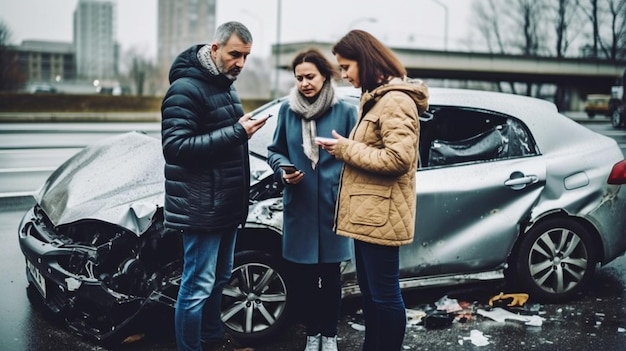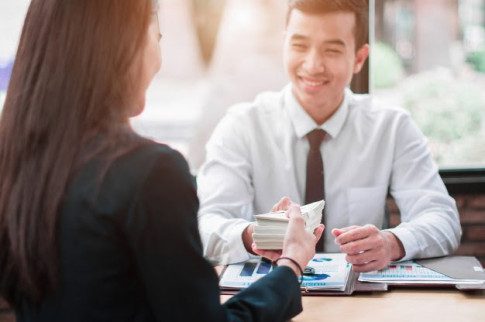What Should You Do If You’re In A Car Accident?

Table Of Contents
Life has always been unpredictable and unexpected twists like being in a car accident can reshape our reality. This is why, the moment you take the wheel, you should focus on the roads and drive safely.
It’s always best to know what to do when you are in a car accident. This will help you protect yourself and respond appropriately should there be a need to file a case against the person who caused the accident.
Did you know that the first hour after a car accident is known as the “golden hour”? This is when it’s crucial to seek medical intervention. This window greatly enhances survival rates and minimizes long-term injuries.
In this article, we will guide you through the steps to take if you find yourself in a car accident. From assessing your safety to contacting your insurance company, we’ll cover all the information you need to handle this situation.
Assess Your Safety And The Safety Of Others

After a car accident, take a moment to assess your safety and check for any injuries or immediate danger. Take a deep breath and try to stay calm.
Look around you and see if there are any immediate dangers, such as oncoming traffic or a leaking gas tank. If it’s safe to do so, move yourself and your vehicle out of harm’s way. Once free from harm, check on the well-being of your passengers and any other individuals involved in the accident.
According to car accident damage attorney Wade E. Byrd P.A., 23% of car accident victims postpone seeking medical help as they often underestimate the severity of their injuries. Even if you think that your injury is not severe, it is still best to call for emergency medical assistance immediately.
Remember to prioritize your safety and the safety of others above all else.
Call Emergency Services
Once you have assessed your safety and the safety of others involved, reach for your phone and dial 911. When speaking to the emergency operator, provide them with accurate and concise information about the accident, including the accident’s location, the number of vehicles involved, and if there are any injuries sustained during the incident.
This immediate response not only aids in receiving quick assistance but also contributes to more efficient emergency management. Emergency services can dispatch the appropriate personnel and resources based on the information you have provided, this can guarantee a timely and effective response to the situation.
Gather Necessary Information From The Other Driver(S)
Once everyone’s safe, proceed to gather necessary information from the other driver(s) involved in the car accident. This step is for insurance purposes and a smoother claims process. Begin the process by:
- Exchange basic information such as names, phone numbers, addresses, and insurance details. Make sure to note the make, model, and license plate number of the other vehicle(s) involved.
- If there are any witnesses, ask for their contact information as well, as their statements may be helpful later on.
- Continue with taking photos of the accident scene such as the damage to all vehicles involved, the surrounding area, and any relevant road signs or traffic signals. These photos will serve as evidence and support your insurance claim.
- Jot down any important details about the accident, such as the time, date, location, weather conditions, and a description of what happened. This information will be useful when providing an accurate account of the incident to your insurance company.
Document The Accident Scene
Capture clear and detailed photographs of the accident scene to document the extent of the damage and provide evidence for your insurance claim. These photographs will support and strengthen your case and ensure a fair resolution.
You have to take wide-angle shots to capture the overall scene, including the position of the vehicles involved and any visible road markings. Then, focus on close-up shots of the damage to your vehicle and any other vehicles involved. Be sure to capture multiple angles and perspectives to provide a comprehensive view of the damage.
Any skid marks, debris, or other relevant factors that may have contributed to the accident have to be photographed as well. Don’t forget to include any visible injuries you or others may have sustained. These photographs will serve as invaluable evidence when dealing with insurance companies and legal proceedings. It’s also a good idea to document any weather conditions or other factors that may have contributed to the accident.
Contact Your Insurance Company And Seek Legal Advice
After ensuring everyone’s safety and documenting the accident scene, your next step should be notifying your insurance company. Most insurance policies require immediate reporting of accidents. Contact your insurance provider and provide them with all the necessary details about the accident, including the date, time, location, and the parties involved. They’ll guide you through the process and help you file a claim if necessary.
It is advisable to seek legal advice following a car accident. Even if you believe the accident was minor and you don’t think you need legal representation, it’s worth consulting with an attorney who specializes in personal injury law. They can provide valuable guidance on your rights, potential legal options, and how to best handle your case.
A lawyer can also assist you in dealing with insurance companies, negotiating settlements, and having you receive fair compensation for any injuries or damages you have suffered.
Conclusion
When you’re in a difficult and chaotic situation, remember to stay calm and manage the incident by following the steps we discussed. Safety should be prioritized and make sure everyone involved is okay. Call emergency services immediately and gather necessary information from the other driver(s). A car accident lawyer will then help you deal with the aftermath of the accident.
Read Also:
You May Also Like

February 5, 2021
Seeking Compensation After An Automobile Accident

April 4, 2022
Success And Growth Of A Law Firm

November 16, 2022






















